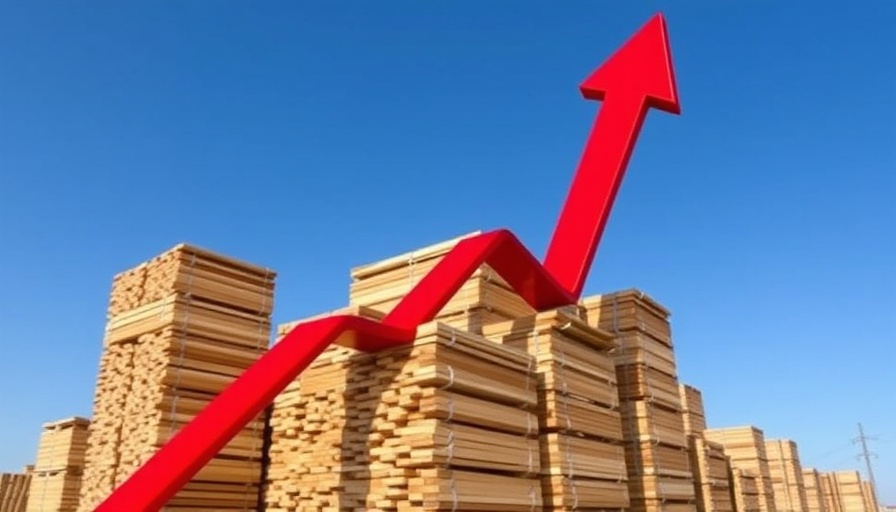
Why Are Lumber Prices on the Rise?
As of March 14, 2025, lumber futures have surged to over $664 per thousand board feet, marking a remarkable increase not seen since the tumultuous supply chain disruptions brought on by the pandemic. This spike has raised questions about the factors behind such soaring prices, one of the primary culprits being tariffs and uncertainty surrounding U.S. trade policies.
Understanding the Impact of Tariffs
The Trump administration's introduction of tariffs on Canadian and Mexican goods is causing confusion among lumber suppliers and builders alike. The increased tariff rates—nearly 40% on Canadian softwood lumber—are expected to ripple through the housing market, impacting home construction costs significantly. As reported, various homebuilding professionals are expressing concerns, suggesting that these tariffs could lead to an increase in housing prices, subsequently affecting affordability.
How Tariffs Corners Homebuilders
Many U.S.-based builders have begun to stockpile lumber following tariff announcements while strategizing to pivot to American-grown timber due to diminishing foreign imports. The National Association of Home Builders (NAHB) reports that the U.S. currently imports roughly 30% of its softwood lumber, a number that is under threat due to these new trade policies. This uncertainty leaves builders caught between rising material costs and regulatory unpredictability, forcing them to rethink their stock strategies.
Practical Insights For DIY Enthusiasts and Professionals Alike
If you’re contemplating a build or renovation project in 2025, it’s crucial to approach the situation with both caution and insight. While professional builders may find it difficult to halt their operations, DIYers have the advantage of flexibility. If your project's budget and timeline allow for it, consider waiting to see how prices evolve as the year progresses. Experts suggest that lumber suppliers buy materials months in advance, implying that current price spikes may not reflect immediately in retail lumber prices.
Future Predictions and Trends
Looking forward, it remains uncertain how the lumber market will stabilize amid ongoing political maneuvering. If tariffs remain in place, the construction industry may witness material costs increase by an estimated 4% to 10% over the next year. Additionally, CoreLogic reports the average new home price might increase by $17,000 to $22,000 due to these ongoing trade tensions.
Conclusion: Navigating the Lumber Market Effectively
The fluctuations in lumber prices, compounded by material sourcing uncertainties and the imposition of tariffs, indicate a potentially rocky road ahead for homebuilders. For consumers eyeing construction projects in the coming months, it is advisable to strategically assess market trends and labor costs. Vigilance will be key in making informed decisions.
 Add Row
Add Row  Add Element
Add Element 


 Add Row
Add Row  Add
Add 

Write A Comment